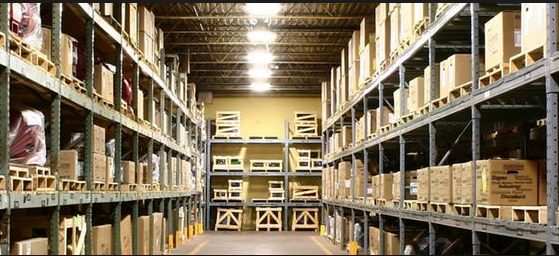Being a facility or plant manager of a refinery can seem like a huge task. In fact it is, and being aware of every aspect of the facility can be tough. Luckily, we are creating this piece to take a look specifically at lighting, and how an upgrade to LED refinery lights will benefit you and your refinery a ton.
The benefits of LED are great; from lower energy consumption, no flickering or buzzing, and even higher quality of light. These are only a few of the benefit that LEDs in a refinery will do, but they definitely are the main benefits.
We mentioned flickering, buzzing, high electricity bills, and low quality light. Can LEDs seriously fix all of these issues? The simple answer to this is YES, yes they can. In fact, they will fix all of those issues and more; all of which will produce an ROI and benefit your work safety and efficiency.
Let’s talk about those points that we listed above, and how they are going to benefit your refinery...
Flickering. Other technologies such as high pressure sodium, metal halide, or other HID lights (even fluorescent too), are all susceptible to flickering. As you probably know, being around a flickering light for just 10 minutes (let alone all day), can become very distracting and annoying.
This can take away attention from tasks at hand, which can create a serious security risk on the job. By upgrading to LEDs (which will never flicker), you literally wipe this issue from ever existing in your facility again. How? Well, the way that LEDs are made simply doesn’t allow for such annoyance to every fall into play. And no, not even near the end of an LEDs life span will it start to flicker (unlike those other technologies)!
Buzzing. Buzzing goes hand in hand with flickering, it can get annoying and cause distractions. Once again, LED lighting will never, ever buzz; allowing you to skip right past this issue entirely too.
Lower energy consumed. We bet that you probably have a ton of lights at your refinery, easily more than 100. If not, you probably have a lot of lights; and a lot of high energy consuming ones. What if you could replace those 400w metal halide fixtures with a 100w LED? That would be a huge reduction in energy consumption, and when you start talking about a lot of lights; the savings month to month will be extremely noticeable.
How is this possible that a 100w LED can replace a 400w metal halide (or any other HID technology)? Because LEDs are more efficient, they do this by outputting more light (or lumens) per watt; thus, requiring less overall wattage to output the same amount of light a higher wattage light may be using. It really is a simple concept, and once you understand lumens per watt and how it plays a role into calculating efficiency of a fixture; you will discover how much waste goes into powering a very inefficient fixture.
Low quality of light. LED is known for offering not only the best quality of light, but also it depreciates much slower. When we talk about depreciation with lighting, we are talking about lumen depreciation. In short terms, this is something that happens to all light fixtures. What it does is reduces the amount of actual light output that a given fixture gives out overtime. So while a metal halide at the beginning of it’s life might output at 15,000 lumens, give it a few years and it will be down at 11,000. This makes areas underlit, and again that can cause major safety issue to employees and visitors. With LED, although they too depreciate in lumens, it is a much slower pace and overall much lower than metal halide and HPS light sources. This can allow you to never face an issue of under lighting, or overlighting. Because facilities often over overlight in the start to account for this; which overlighting is no good either. It increases costs associated with buying more fixtures initially, all for what? Nothing, because less fixtures and less energy with LED will produce the same amount of light that more fixtures and more watts metal halide will output.
What types of fixtures are even found in refineries?
Some of the non-tech savvy refinery managers out there may not know the “official” terms of lighting fixtures out there. Believe it or not, knowing what the names ar eis highly important to better know what to look for when researching fixtures you may want to upgrade to. Here is a list of most common fixtures used in or outside of a refinery:
-
High Bays (used for high ceilings indoors)
-
High masts (used for outdoor lighting, high in the air)
-
Hallway Lights (panels & tubes) (mostly for outside)
-
Outdoor lighting (wall packs, parking lot lights, flood lights)
-
Vapor proofs and / or tights (used to prevent both dirt or gases from entering lights)
Final thoughts
Hopefully all of this info regarding refinery lighting and the benefits of LED will help you when it comes time to make an upgrade in your lighting system at your facility. Remember all of the benefits and how LED will actually produce an ROI, and it will be an easy choice!
source http://my-led-lighting-guide.blogspot.com/2016/11/creating-better-refinery-work.html

No comments:
Post a Comment